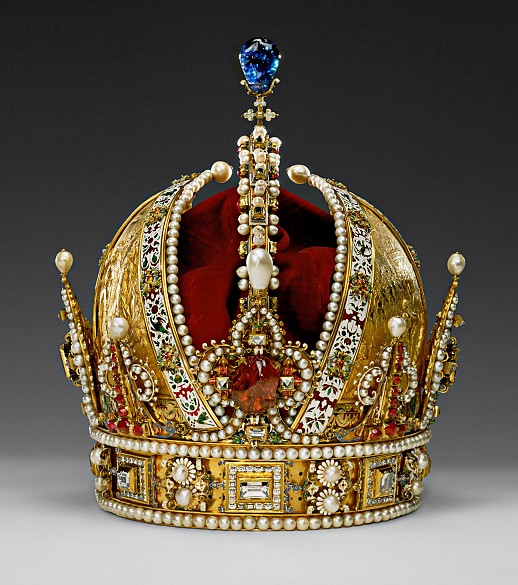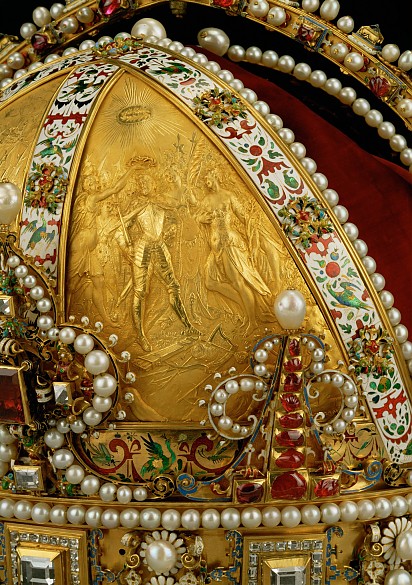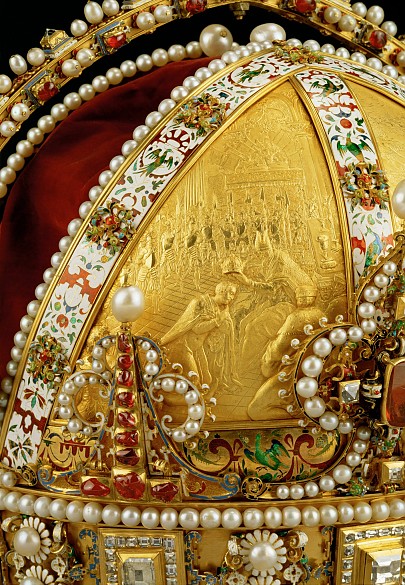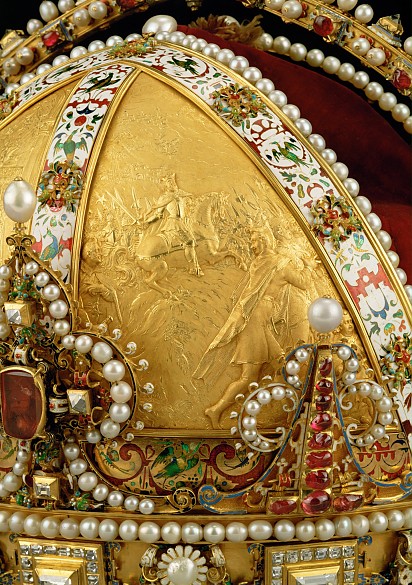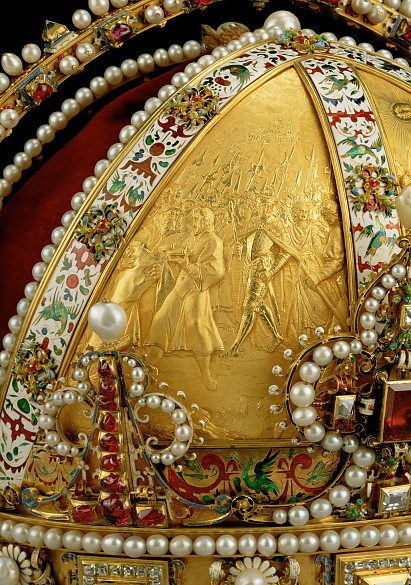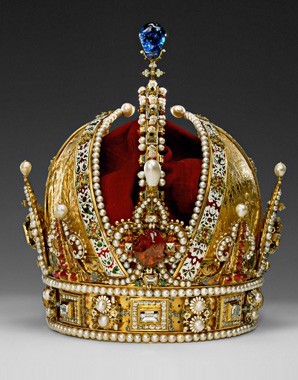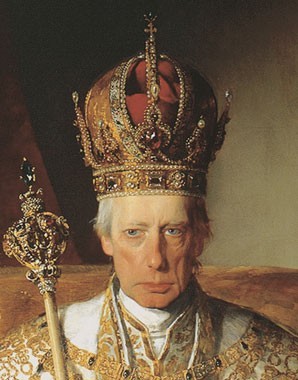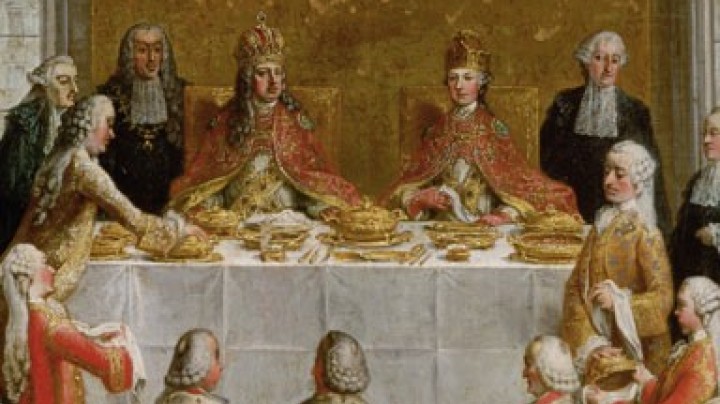Signs of imperial majesty: the Crown of Rudolf
The ‘Rudolfine House Crown’, its misleadingly mundane name concealing what is a masterpiece of almost peerless beauty and preciousness, became the Austrian imperial crown and the most significant part of the regalia of the Habsburg imperium after 1804.
The name ‘Hauskrone’ or ‘House Crown’ derives from the circumstance that the crown of the Holy Roman Empire was used only at the coronation of each emperor and since 1424 had been kept permanently at Nuremberg. Hence it was customary that rulers had so-called Hauskronen – personal crowns – made as substitutes so as to be able to project a visual manifestation of their imperial majesty after their coronation.
As a rule, these personal crowns were destroyed after the ruler’s death, their precious materials melted down or used elsewhere. Rudolf II’s personal crown was made at his behest in Prague in 1602. Thanks to its great material value and the special symbolism of its design it was preserved and also worn by Rudolf’s successors on the imperial throne.
A connoisseur of art, Rudolf paid great attention to the quality of the materials. These included various precious stones and pearls thought at the time to have special spiritual properties – a notion that Rudolf, with his interest in the occult, was sure to have been familiar with. The structural programme is also rich in symbols chosen to represent imperial status in a fitting manner, for Rudolf’s thinking was pervaded by the concept of the sublimity of imperial majesty.
The crown consists of three principal elements, their contours highlighted with pearls: firstly the circlet itself, accentuated with points in the form of fleur-de-lis, an ancient royal emblem. Above this rises the high arch, a symbol of the ruler’s authority of command which goes back to the emperors of Antiquity. Furthermore we can recognise a kind of mitre, reminiscent of a bishop’s mitre or the liturgical headgear of an Old Testament priest, alluding to the emperor’s unique spiritual status as pontifex by divine right. The mitre bears reliefs showing depictions of the four principal offices of the emperor, set in bands of enamel work.
The Crown of Rudolf was invested with new significance when the Austrian Empire was founded in 1804. The choice of the former Hauskrone as the crown of the new hereditary empire was a pragmatic one, linking it through the explicit symbolism of the crown to the traditions of the Holy Roman Empire.
